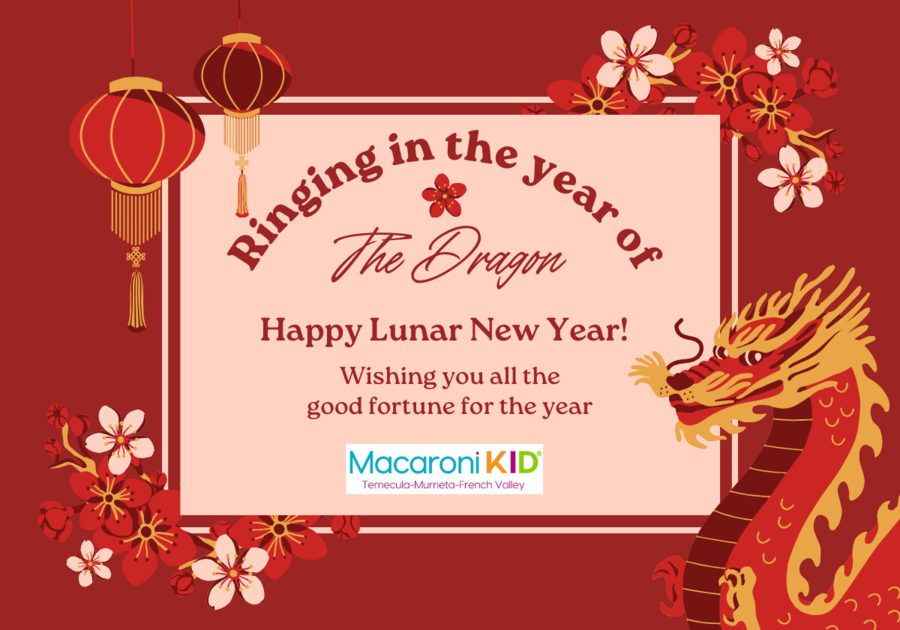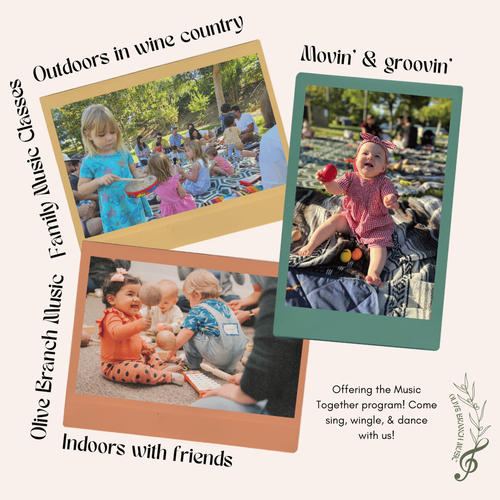Lunar New Year is one holiday you’ll have a blast learning about and partaking in the unique and exciting festivities, like the dragon dance, fireworks, Hong Pao red envelope gifts, and feasting! While the traditions and activities are fun and exciting for children, the holiday celebrates looking to the future and welcoming new beginnings – a positive outlook we could all adopt.
Chinese New Year usually falls on the second new moon after the winter solstice, so the date changes year by year.
This year, the New Year officially begins on February 10th in 2024 and will culminate with the Lantern Festival on February 24th.
It's time to say goodbye to the Year of the Tiger and usher in the Year of the Dragon! This year, Lunar New Year is on February 10, 2024.
Legend of the Origin of Chinese New Year - Nian
Chinese New Year is steeped with stories and myths. One of the most popular legends is about the mythical beast Nian (Year).
According to legend, Nian would terrorize villagers during the Spring Festival. Nian would eat livestock, crops, and even people on the eve of a new year. To prevent Nian from attacking people and causing destruction, people put food at their doors for Nian.
It’s said that a wise old man figured out that Nian was scared of loud noises (firecrackers) and the color red. So, people put red lanterns and red scrolls on their windows and doors to stop Nian from coming inside. Crackling bamboo (later replaced by firecrackers) was lit to scare Nian away.
The tradition grew that each New Year approaching, the villagers continued to wear red, hang red lanterns and scrolls, and use firecrackers and drums to frighten Nian away. Themes of the color red and drums are incorporated into traditions that carry on today.
Watch this fun video to learn about Nian:
The 12 Zodiac Animals of the Great Race and the 5 Elements:
Each year in the Lunar calendar is represented by one of 12 zodiac animals. The 12 zodiac animals are the rat, ox, tiger, rabbit, dragon, snake, horse, sheep, monkey, rooster, dog, and pig.
In addition to the animals, five elements of earth, water, fire, wood, and metal are also mapped onto the traditional lunar calendar.
The Five Elements Theory is a Chinese philosophy used to describe interactions and relationships between things. The five elements — wood, fire, earth, metal, and water — are believed to be the fundamental elements of everything in the universe between which interactions occur.
Every year is associated with an element as well. Depending on what year you were born, you'll get a unique combination of a sign and an element.
Here are the qualities associated with each element, according to The Guide to Chinese Horoscopes:
Metal: Solidity and willpower
Water: Responsiveness and persuasion
Wood: Imagination and creativity
Fire: Passion and bursts of dynamic energy
Earth: Down-to-earth qualities that encourage focus and commitment to achieve goals
To figure out which element was associated with your birth year, look for the last number of your birth year:
0 or 1: Metal
2 or 3: Water
4 or 5: Wood
6 or 7: Fire
8 or 9: Earth
By landing on your unique Chinese zodiac sign and element combo, you can get a better sense of your perspective as you move through the world and how you might experience the ever-shifting astrological tides.
Check out this video to learn more about the Great Race, 12 Zodiac Animals, and the 5 Elements:
2024, Year of the Wood Dragon
Each of the represented animals comes with unique traits that are indicative of what’s to come in the new year. It's also believed to represent personality traits in people born this year.
So what can you expect in the year of the dragon?
In Chinese culture, the Dragon holds a unique place in the Chinese Zodiac because out of all the animals, only dragons are mythical. The dragon is an auspicious and extraordinary creature, unparalleled in talent and excellence. The Dragon is full of strength and energy, a very lucky animal that symbolizes power, nobility, honor, luck, and success.
The element associated with the 2024 Dragon is strong yang wood. In the five elemental cycle, wood fuels the element of fire, and thus the quality of the Dragon is enhanced. Be prepared for an unpredictable and volatile year ahead. “Never a dull moment” is the phrase for 2024!
2024 is forecasted to bring about opportunities, changes, and challenges. If you're seeking a shift in your current lives, this year might offer a favorable chance.
Check out our list of Lunar New Year Children’s books to help your kids learn about this fun holiday:
We love going to the library to check out picture books on topics we want to learn about. Some libraries even have themed craft days! Check out our list of some fun children’s books for your kids to learn more about the Lunar New Year holiday:
 |
Happy Chinese New Year!
by Jannie Ho
Count your way to the Lunar New Year with this adorable board book for babies and toddlers. Tiny readers will love the colorful illustrations of zodiac animals and the simple, rhythmic text leading up to a festive party. The story includes Chinese numbers, a pronunciation guide, and an explanation of each tradition.
(Ages 0 – 3)
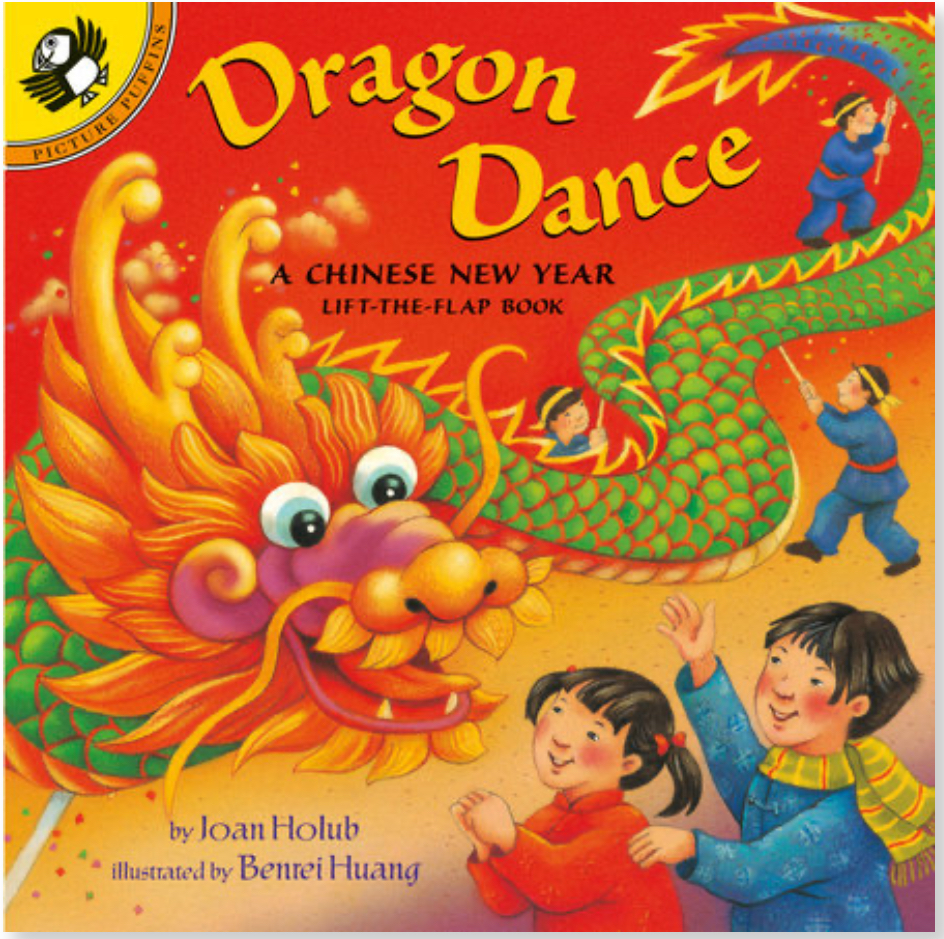 |
Dragon Dance: A Chinese New Year Lift-the-Flap Book
by Joan Holub, illustrated by Benrei Huang
Who can resist a lift-the-flap book — especially when it’s filled with rhyming descriptions of the things that make Chinese New Year so much fun for kids? Little ones will find treasures on every page, from eating a celebratory dinner to receiving gifts from family members and watching the Chinese New Year’s Parade.
(Ages 2 – 5)
 |
Lunar New Year
by Mary Man-Kong, illustrated by Michelle Jing Chan
Families across Asia celebrate Lunar New Year, and this Big Golden Book shares how different cultures have different traditions. Little reads can learn about the holiday's history, the zodiac signs, delicious foods, and so much more. Warm and colorful illustrations help bring these delightful traditions to life.
(Ages 2 – 5)
 |
Bringing In the New Year
by Grace Lin
Young readers will be captivated by this simple tale of a Chinese American family preparing for the Lunar New Year. Grace Lin's boldly patterned illustrations will have kids wishing they could jump right into the celebration.
(Ages 3 – 7)
 |
The Night Before Lunar New Year
by Natasha Wing and Lingfeng Ho, illustrated by Amy Wummer
Written in the style of The Night Before Christmas, this rhyming picture book takes readers through the preparations and excitement leading up to the Lunar New Year. Readers will enjoy the vibrant artwork and learn more about the holiday’s significance.
(Ages 4 – 6)
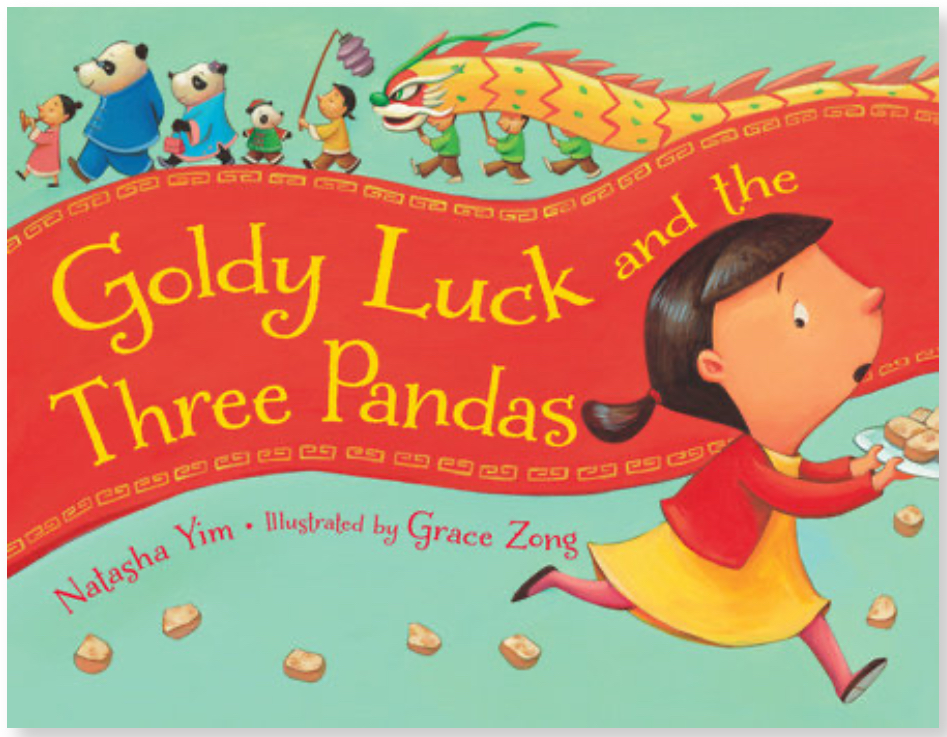 |
Goldy Luck and the Three Pandas
by Natasha Yim, illustrated by Grace Zong
After Goldy Luck accidentally wreaks havoc on the home of a family of panda bears, she decides to embrace the fresh-start spirit of Lunar New Year and set things right. An adorable retelling of Goldilocks and the Three Bearswith Chinese American characters and cultural references.
(Ages 4 – 8)
Check out these 3 crafts you can do at home with the kids to help celebrate the year of the dragon:
These three kid-friendly Lunar New Year crafts will not only keep your children entertained, but also help them learn about the rich cultural traditions associated with this festive holiday. Get creative and have a blast celebrating the Year of the Dragon with your little ones.
 Artem Podrez | Canva |
1. Zodiac animal masks
Each year in the Chinese zodiac cycle is associated with a different animal. This is the Year of the Dragon! Create masks using the theme of the Year of the Dragon and have a mini zodiac parade at home. Use simple materials like construction paper or paper plates, paint, markers, and craft sticks and let kids bring their version of a dragon mask to life.
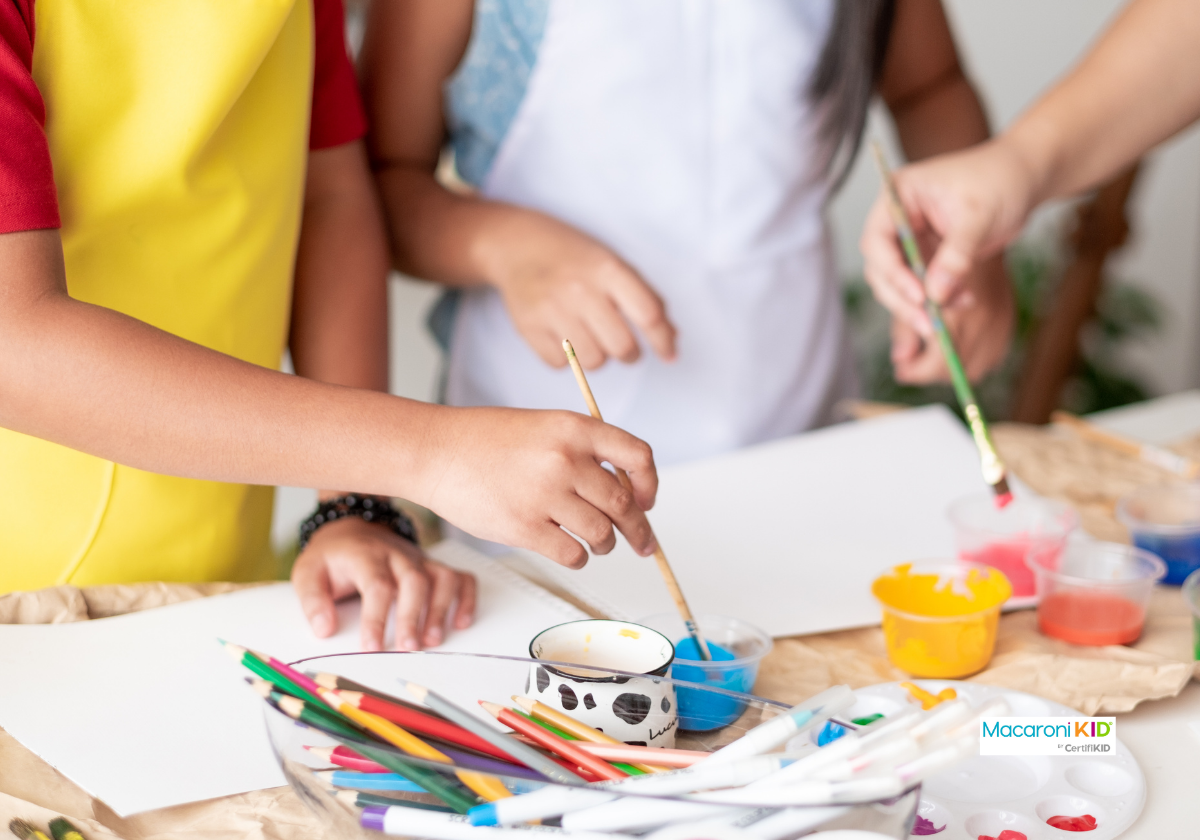 Core Lens | Canva |
2. Cherry blossom tree art
Cherry blossoms are a symbol of renewal and beauty during Lunar New Year. Create a keepsake cherry blossom tree art piece using paint and your child's fingerprints. It's a lovely way to add a touch of nature to your Lunar New Year decorations.
 |
3. Dragon Puppet
Print out the dragon head and tail on on card stock and color it or make the head with a toilet paper roll and tail with construction paper. Tape popsicle stick to both the head and tail. Cut out a strip of red construction paper and fold it like a fan. Add tissue paper to each fold if you like or leave as is. Glue/tape the strip of paper to each end of the popsicle stick. Now you have a fun dragon puppet!
You can get the printable HERE.
Want to learn how Lunar New Year is celebrated around the world?
Contrary to what many people outside Asia may think, Lunar New Year is not an exclusively Chinese holiday. True, it follows the Chinese Lunar calendar, but the holiday is celebrated across Asia, and each country has its own customs and traditions.
Lunary New Year is mainly observed by East Asian countries, however, many festivities occur in places around the globe.
Learn more about how LNY is celebrated around the world below:
China
Dragon dances, mooncakes, parades, fireworks, red envelopes... most of us are familiar with many of the traditions associated with Chinese New Year celebrations. Lunar New Year is a very big deal in China. Schools and businesses are closed for a whole week and millions of people travel to their hometowns to spend the holiday with family in what is often referred to as "the world's largest human migration." Red is considered a lucky color in Chinese culture, so you will see it in abundance during Lunar New Year festivities.
Speaking of red, those red envelopes, known as hong bao, contain money that is given by elders to children. While the traditional foods prepared and eaten during Lunar New Year vary somewhat by region, jiaozi (dumplings), nian goa (rice cakes), and mandarin oranges are considered lucky foods.
How to celebrate Chinese New Year at home:
 Leung Cho Pan via Canva Leung Cho Pan via Canva |
- Learn to say "Happy New Year" in Mandarin
- Try these kid-favorite recipes for jiaozi (dumplings), lo mein or spring rolls
- Make this adorable Chinese Dragon Puppet craft
- Watch a Chinese Dragon Dance performance and learn about its meaning
- Watch this kid-friendly video explaining the origins of Lunar New Year in China
Korea
Korean Lunar New Year, called Seollal, is one of the most important national holidays in Korea, where families gather over three days — spanning from the day before Seollal to the day after — to pay respect to their ancestors, prepare and eat traditional foods, play folk games, and exchange gifts.
Eating rice cake soup (tteokguk) is an important part of the tradition, as Koreans believe everyone gets a year older on Seollal — but only if they eat their tteokguk! Kids look forward to performing a deep traditional bow (sebae) for their elder family members in exchange for blessings — and New Year's money!
How to celebrate Seollal at home:
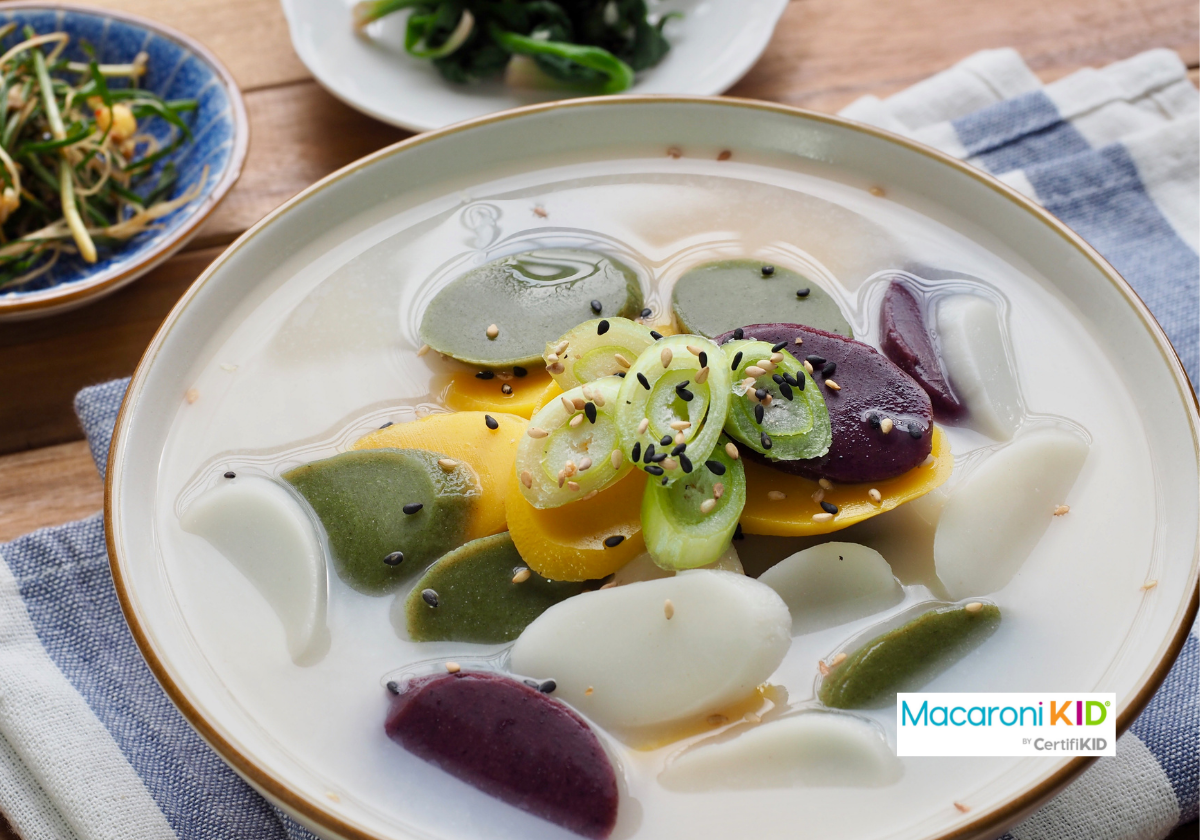 Getty Images via Canva Getty Images via Canva
|
- Learn how to say "Happy New Year" in Korean
- Learn the proper way to bow on Seollal (sebae)
- Craft these fun Korean fans and drums and this origami Hanbok (traditional Korean dress)
- Learn how to make your own Yut Nori game, a traditional board game Koreans often play on Seollal
Vietnam
Vietnamese New Year ("Tết") is the most important national holiday in Vietnam. Similar to Korean Seollal, Vietnamese people celebrate by returning to their home villages for big family reunions involving special holiday foods, decorations, games, ancestral worship, exchanging traditional New Year's greetings, bestowing lucky money on kids and elders, and purification rituals aimed at washing away the bad luck of the old year and welcoming the new year afresh.
Lunar New Year's Eve kicks off the celebrations with fireworks, dragon dances, and boisterous parades filled with rattles, gongs, drums, and bells meant to scare off evil spirits. The first day of Tết is the most sacred, celebrated with just close family. Family members dress up in new clothes, symbolizing a fresh start to the new year, and children receive a red envelope containing money from their elders. The following days are filled with visits with friends and extended family.
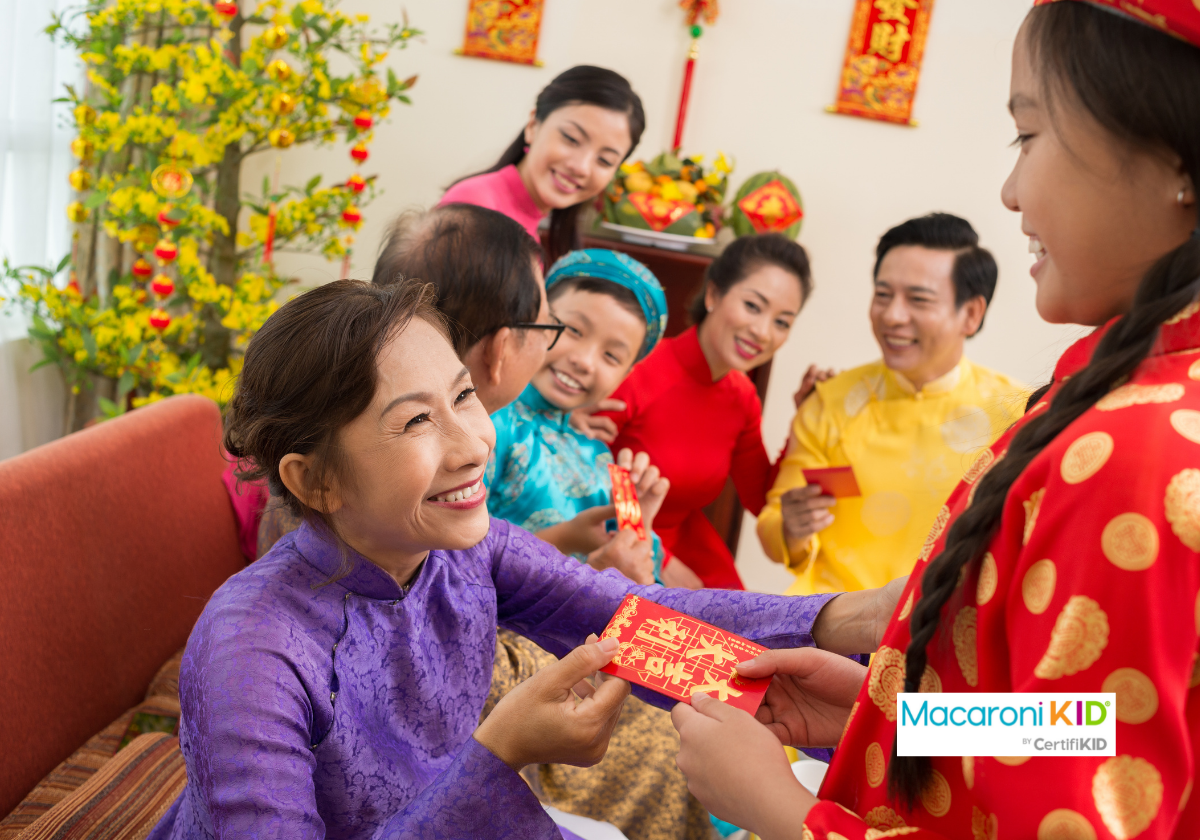 DragonImages via Canva DragonImages via Canva |
How to celebrate Tết at home:
- Learn how to wish someone a "Happy New Year" in Vietnamese
- Try this Mứt hoa quả (candied fruit) recipe, a favorite of Vietnamese children during Tết
- DIY your own Vietnamese nón lá ("leaf hat")
Tibet
Tibet's Losar festival is steeped in their common Buddhist faith with an emphasis on continuous chanting of scripture to expel the evil demons that the Tibetan people believe exist everywhere, and praying for good luck and blessing for the coming year.
Families prepare for Losar by buying new clothes, thoroughly cleaning their homes to clear away the bad luck of the old year, and decorating with fragrant flowers and auspicious signs. The centerpiece of the home is the Losar altar, which is a basic Tibetan Buddhist shrine, but with additional items meant to invoke blessings and abundance for the New Year.
Fun fact: Because the Tibetan words for "sheep's head" and "beginning of the year" are similar, it is customary for families to make a sheep's head out of colored butter as a decoration! Losar festivities last several days and include gathering with family and friends, prayer ceremonies, exchanging gifts, eating traditional foods, and visiting local monasteries.
How to celebrate Losar at home:
 Getty Images via Canva Getty Images via Canva
|
- Learn traditional Tibetan New Year's greetings
- Make khapse (deep fried pastries most often eaten during Losar) and momos (Tibetan dumplings)
- DIY your own Tibetan prayer flags
Mongolia
Tsagaan Sar literally translates to "White Moon," and is Mongolia's most important national holiday. While Tsagaan Sar celebrations and customs have changed several times since the holiday was first established in the 12th century, modern festivities focus on family togetherness and unity, paying respect to elders, passing on Mongolian culture and traditions to the younger generation, and welcoming spring with an optimistic spirit and kind heart.
Similar to other cultures, Mongol New Year's preparations focus on cleaning their homes and bodies, with the belief that cleanliness ushers in good luck, and preparing traditional foods. Tsagaan Sar festivities officially last three days and involve visiting with family, friends, and neighbors; many special rituals; and lots of eating with an emphasis on white food, which symbolizes purification.
How to celebrate Tsagaan Sar at home:
- Learn Zolgokh, the traditional Mongolian greeting performed during Tsagaan Sar and seen in the video above.
- More than half of Mongols live in gers (yurts); watch this video to see how a ger is built
- Make a Mongolian girl's headdress craft
- Make Mongolian buuz (steamed dumplings) and suutei sai (milk tea)
Philippines
When the clock strikes midnight in the Philippines, you'll see children and adults jumping for joy, as it's said that it will make them grow taller. The most traditional celebration of the Lunar New Year is called Media Noche, where Filipino families come together for a midnight feast to celebrate a year of prosperity ahead. The table is usually full of round-shaped fruits — a tradition that originates from China — as the shape represents good fortune.
The food that's typically eaten during Lunar New Year in the Philippines includes sticky rice dishes, such as biko, bibingka, and nian gao, since it's believed to help bind families together. Pancit (long noodles) is also enjoyed to help bring a healthy, long life and good luck for the year ahead.
One of the most unique superstitions of the Lunar New Year in the Philippines is choosing to wear polka dots, as their round shape represents prosperity, money, and good fortune. Fireworks are also often set off to create loud noises to scare away any bad spirits, while lights are turned on and windows and doors are left open. Another popular superstition is not spending any money on the first day of the year to encourage better finances.
How to celebrate LNY at home:
 |
- Eat bibingka and Pancit
- Wear polka dots
- Jump up and down
Easy Ways You Can Celebrate Lunar New year at Home:
1. Clean your house
How to celebrate Chinese New Year at home? Clean!! I know it sounds like I have some major Mom-agenda, but clearing the house of negative energy is an important part of the celebration. Sweeping out bad luck is a key part to ensuring a prosperous New Year.
2. Hang up red Lanterns
The Lantern Festival wraps up the Chinese New Year celebrations. It occurs on the first full moon and marks the return of Spring. Beautiful paper lanterns are strung up everywhere and people celebrate by sending flying lanterns into the sky along with wishes for the New Year. Create some lantern magic at home by making your own lantern crafts. Try out this flying tea bag experiment to recreate flying lanterns on a smaller scale.
3. Have a Family Dinner
Chinese New Year starts with a Reunion Dinner among family members and is considered one of the most important meals of the year. You can have your own reunion dinner at home by gathering around the table with your loved ones to eat some traditional cuisine-fish for prosperity, longevity noodles for happiness, and fresh tangerines for good luck. If someone is missing from the celebration, it is customary to still set a place for them at the table.
4. Dress in Red
Red is a powerful color in Chinese culture, symbolizing good energy, wealth, happiness, and protection. Try to incorporate as much red as possible into everyone’s attire during your celebration time. You can even head to an Asian market or check online for an outfit that symbolizes Chinese New Year. Just be sure to avoid wearing black or white, since they symbolize sadness and loss.
5. Gift Hong Paos
These red envelopes are important gifts of the Chinese New Year. They usually contain money and are passed down from elders to children (or from married to unmarried friends) as a show of sharing their luck and wealth.
Local Lunar New Year Festivals You Can Check Out:
Marking the end of winter and the beginning of the spring season, LNY celebrates looking to the future for new beginnings with themes of happiness, health, and good fortune.
We’ve gathered a list of local events in SoCal that celebrate the Lunar New Year. Festivals often include crafts, performances and delicious food to help ring in the new year!
Rancho Cucamonga
📆 January 20-21 2024
🕚 Sat 11am - 8pm / Sun 11am-7pm
📍RC Sports Center
8303 Rochester Ave, Rancho Cucamonga, CA 91730
Riverside
📆 January 27-28, 2024
🕚 Sat 11am - 8pm / Sun 11am-7pm
📍Downtown on Mission Inn Ave
3527 Mission Inn Ave, Riverside, CA 92501
Commerce
📆 Feb 8&9 2024
🕚 4pm-10pm
📍Commerce Casino Event Center
Rancho Mirage
📆 Feb 10, 2024
🕚 11am-6pm
📍The River
Eastvale
📆 Feb 17-18, 2024
🕚 Sat 11am - 8pm / Sun 11am-7pm
📍Scholar Way
We hope you enjoyed this tour of Lunar New Year traditions and have fun incorporating some into your own celebrations this year.
 When visiting events and local businesses, be sure to tell them Macaroni KID sent you... and don't forget to tell all your friends!
When visiting events and local businesses, be sure to tell them Macaroni KID sent you... and don't forget to tell all your friends!
 |  |  |


